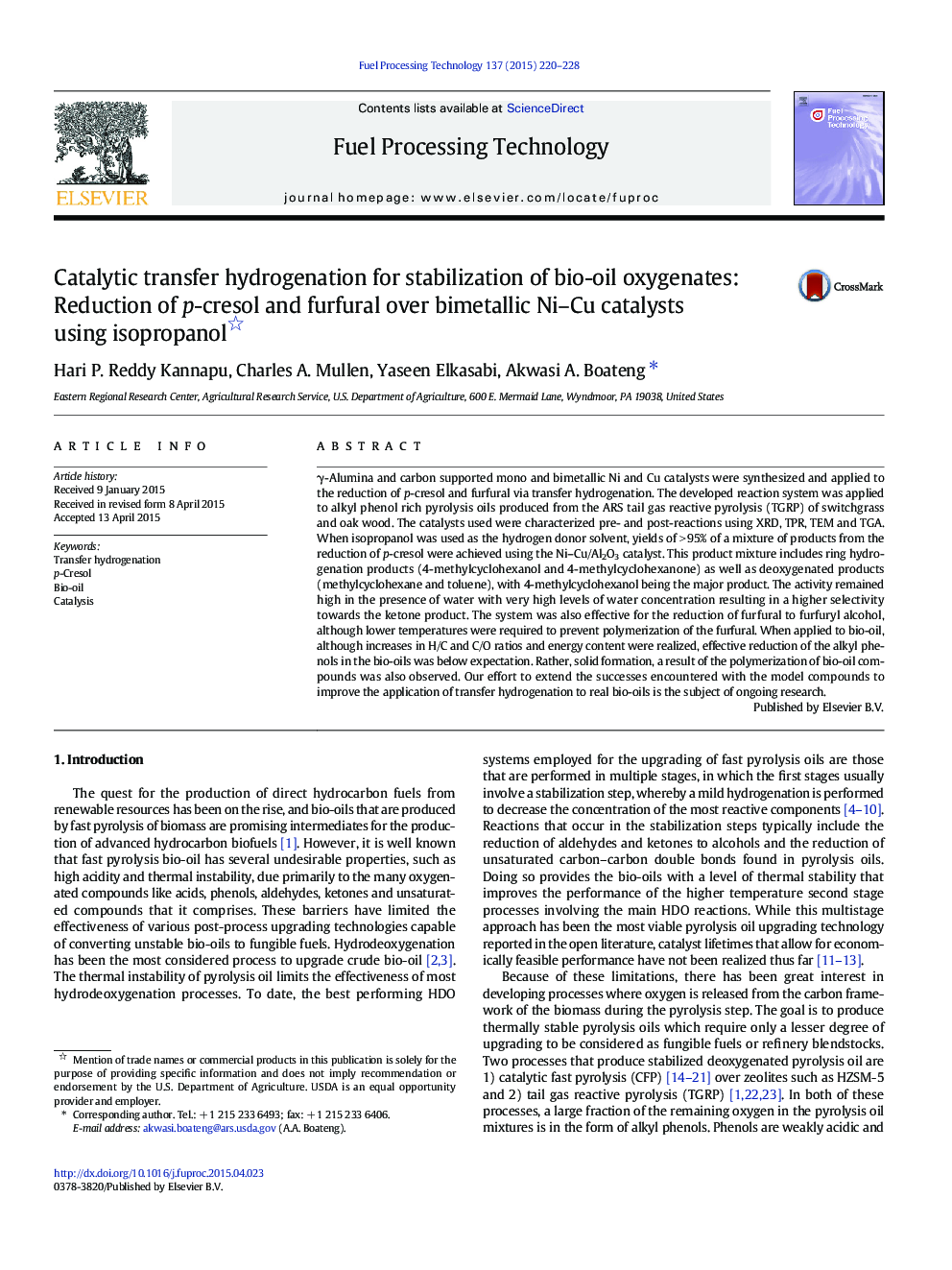| کد مقاله | کد نشریه | سال انتشار | مقاله انگلیسی | نسخه تمام متن |
|---|---|---|---|---|
| 209480 | 461671 | 2015 | 9 صفحه PDF | دانلود رایگان |

• Catalytic transfer hydrogenation was studied for stabilization of bio-oil oxygenates.
• Ni–Cu catalysts were effective for transfer hydrogenation of p-cresol and furfural.
• Isopropanol is a good hydrogen donor for this transformation.
• Studied conditions were applied to biomass pyrolysis oils.
• Increase in H content and heating value of bio-oil was observed.
γ-Alumina and carbon supported mono and bimetallic Ni and Cu catalysts were synthesized and applied to the reduction of p-cresol and furfural via transfer hydrogenation. The developed reaction system was applied to alkyl phenol rich pyrolysis oils produced from the ARS tail gas reactive pyrolysis (TGRP) of switchgrass and oak wood. The catalysts used were characterized pre- and post-reactions using XRD, TPR, TEM and TGA. When isopropanol was used as the hydrogen donor solvent, yields of > 95% of a mixture of products from the reduction of p-cresol were achieved using the Ni–Cu/Al2O3 catalyst. This product mixture includes ring hydrogenation products (4-methylcyclohexanol and 4-methylcyclohexanone) as well as deoxygenated products (methylcyclohexane and toluene), with 4-methylcyclohexanol being the major product. The activity remained high in the presence of water with very high levels of water concentration resulting in a higher selectivity towards the ketone product. The system was also effective for the reduction of furfural to furfuryl alcohol, although lower temperatures were required to prevent polymerization of the furfural. When applied to bio-oil, although increases in H/C and C/O ratios and energy content were realized, effective reduction of the alkyl phenols in the bio-oils was below expectation. Rather, solid formation, a result of the polymerization of bio-oil compounds was also observed. Our effort to extend the successes encountered with the model compounds to improve the application of transfer hydrogenation to real bio-oils is the subject of ongoing research.
Journal: Fuel Processing Technology - Volume 137, September 2015, Pages 220–228